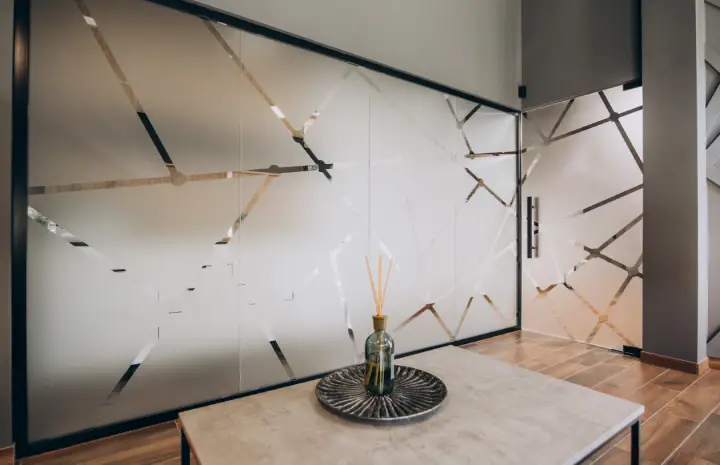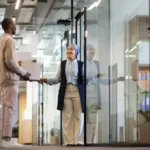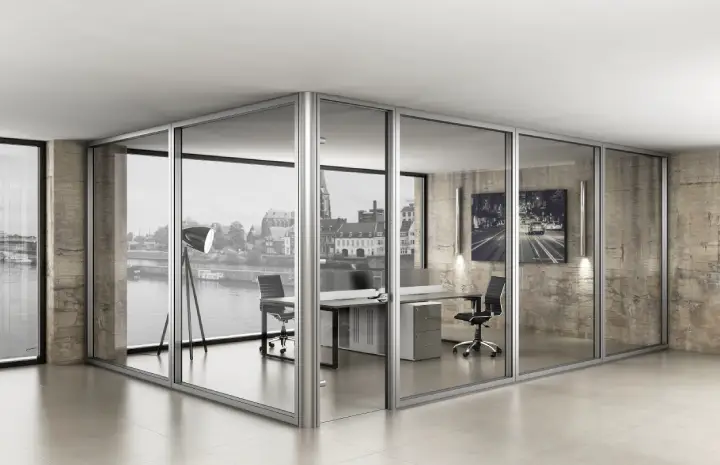Modern Office, Modular Boundaries: Glass Bi-Fold Walls
The modern workplace is no longer confined by fixed walls and static layouts. As collaboration, transparency, and flexibility shape contemporary design trends, Glass Bi-Fold Walls have emerged as the ultimate solution for adaptable office environments.
These dynamic partitions allow businesses to transform spaces in seconds—opening up for team collaboration or closing off for privacy—without compromising on aesthetics or acoustic comfort. This article explores how Glass Bi-Fold Walls create modular boundaries that enhance productivity, design flow, and overall workplace experience.
The Evolution of Office Space Design
A decade ago, corporate offices were dominated by cubicles and enclosed rooms. The focus was on isolation and task-based efficiency. Today, the philosophy has shifted toward openness, visual connectivity, and shared energy.
With the rise of hybrid work models, offices must now balance privacy and collaboration. Glass Bi-Fold Walls provide exactly that—modular partitions that move, fold, and redefine the layout as needed.
They turn traditional workspaces into dynamic zones, aligning perfectly with the architectural trend of “adaptive design,” where every area serves multiple purposes.
What Are Glass Bi-Fold Walls?
Glass Bi-Fold Walls consist of a series of interconnected glass panels that fold and slide along a top or bottom track. They function as transparent dividers, enabling flexible space management without visually breaking the continuity of an office.
Unlike traditional partitions or fixed glazing, these walls can open completely to create a unified space or close quietly to form private meeting areas.
Modern systems are available in:
- Framed or frameless designs for different aesthetic preferences.
- Manual or automated mechanisms for ease of use.
- Acoustic or tempered glass options depending on privacy needs.
Their modular design ensures seamless transitions between collaboration and concentration zones.
Why Glass Bi-Fold Walls Suit Modern Offices
1. Versatile Space Management
Office real estate is valuable, and efficient space utilization is a top priority. Glass Bi-Fold Walls allow you to transform a single area into multiple functional zones—conference spaces, brainstorming lounges, or private offices—within seconds.
Their folding design eliminates the need for permanent walls, allowing layouts to adapt instantly to changing team sizes or meeting requirements.
2. Maximizing Natural Light
One of the strongest design advantages of Glass Bi-Fold Walls is their ability to flood interiors with daylight. Natural light enhances mood, productivity, and visual appeal.
Instead of obstructing light flow, these transparent walls channel it across the workspace, making even compact offices feel open and spacious.
3. Visual Continuity with Privacy Options
Employees often prefer openness, but noise and distraction can become problems. With sound-rated glass and precision seals, Glass Bi-Fold Walls deliver quiet zones while maintaining visual connectivity.
Frosted or switchable privacy glass can also be integrated for confidential meetings without sacrificing design cohesion.
4. Modern Aesthetics
A key reason architects favor Glass Bi-Fold Walls is their minimalist appearance. Slim aluminum frames or frameless edges align with modern interior aesthetics, complementing wood, metal, or concrete finishes.
The result: a sleek, premium look that elevates any workspace into a cutting-edge design environment.
Creating Modular Boundaries That Work
Modular boundaries refer to flexible partitions that can be reconfigured based on immediate needs. They support an office’s ability to evolve without reconstruction or disruption.
Here’s how Glass Bi-Fold Walls achieve this balance between function and fluidity:
1. Dynamic Division
Whether you’re separating a lounge from a conference area or defining workstations within an open layout, Glass Bi-Fold Walls adapt effortlessly. They provide structure without permanence, helping offices evolve naturally with workflow.
2. Collaboration Zones
During collaborative sessions, simply fold the panels aside to merge spaces. The seamless folding mechanism allows large groups to work together comfortably while retaining visual unity.
3. Quiet Pods and Meeting Spaces
When focus or privacy is needed, closing the wall instantly creates an acoustically insulated space. Teams can discuss projects privately while others continue working without interference.
4. Future Scalability
Unlike fixed drywall or glass panels, modular systems can be reinstalled or reconfigured when expanding or redesigning. This makes Glass Bi-Fold Walls a smart long-term investment for growing companies.
Installation and Design Considerations
Before incorporating Glass Bi-Fold Walls into your office, several factors must be planned carefully:
1. Space and Load Capacity
Determine whether your ceiling can support a top-hung track or if a floor-mounted system is better suited. Accurate load calculations ensure smooth operation and safety.
2. Material Selection
Choose from tempered, laminated, or double-glazed glass depending on your acoustic and privacy needs. The right glass type balances transparency with performance.
3. Frame Finish and Style
Powder-coated aluminum, anodized metal, or frameless edges all influence the visual character of your office. Align finishes with the overall interior palette.
4. Accessibility and Operation
Consider how often panels will be opened or closed. For frequent use, opt for self-lubricating rollers and stainless-steel hinges that ensure durability.
5. Acoustic Requirements
In open offices, noise management is key. Acoustic glass and perimeter seals can enhance sound insulation up to 40–45 dB, depending on design.
A professional installer can assess these factors and customize Glass Bi-Fold Walls to your exact specifications.
Maintenance and Longevity
Proper maintenance ensures long-lasting clarity and functionality. Here’s how to keep your folding walls performing smoothly:
- Clean glass panels regularly with non-abrasive cleaners to maintain transparency.
- Inspect tracks and rollers every few months for dust buildup or debris.
- Lubricate hinges and pivot joints with silicone spray to avoid friction.
- Check alignment annually to prevent uneven folding or dragging.
High-quality Glass Bi-Fold Walls are engineered to endure frequent use, making them ideal for dynamic office settings.
Advantages Beyond Aesthetics
While the visual appeal of Glass Bi-Fold Walls is undeniable, their practical benefits make them a preferred choice for future-ready offices:
- Energy Efficiency – Maximizing daylight reduces dependency on artificial lighting.
- Employee Well-Being – Natural light and open sightlines boost morale and focus.
- Improved Brand Perception – Transparent, modern designs reflect innovation and professionalism.
- Sustainability – Modular systems minimize material waste during office renovations.
In essence, these walls merge beauty with function, making them one of the most versatile architectural elements in contemporary design.
How to Incorporate Glass Bi-Fold Walls in Office Layouts
- Executive Suites: Create partitioned offices that still feel connected to the main floor.
- Conference Rooms: Add acoustic bi-fold glass walls for privacy without isolation.
- Reception Areas: Maintain open visibility while segmenting waiting spaces.
- Breakout Zones: Use folding glass walls to define casual collaboration areas.
Each installation serves both aesthetic and functional goals, creating offices that inspire productivity and creativity.
Conclusion: Redefining Modern Workspaces
Glass Bi-Fold Walls represent more than a design trend—they embody a movement toward adaptable, employee-centered spaces. They dissolve rigid barriers, letting natural light, collaboration, and creativity flow freely through the office.
In an era where flexibility defines success, modular glass partitions stand out as the perfect blend of transparency and functionality. Whether renovating an existing space or designing from scratch, Glass Bi-Fold Walls allow you to shape an environment that grows with your vision — one fold at a time.




